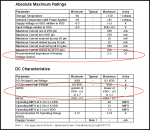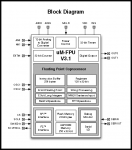Hi, I am trying to do some conversion of an ADC value i am reading in via the uM-FPU 3.1's built in 12 bit ADC. but to be able to ensure my figures are accurate, i need to read the internal FVR, if possible.
I am reading an oxygen sensor using the ADC and am normally reading a value of around 2600, but as i blow on the oxygen gas sensor reading goes down as expected to say there is less oxygen. this value is directly proportional to the amount of oxygen in the air.
My problem is that as the batteries run down, this ADC value is going up.. i read 2600 at a supply voltage of 5V but as the voltage is lower it gets higher. I have managed to get this to work properly using the calibADC10 command on the picaxe 40x2 which reads the internal voltage reference, but i want to be able to keep all the maths inside the FPU chip. and it also has a 12 bit adc in the fpu instead of the 10 bit on the picaxe..
Does anyone know if it is atall possible to read the internal FVR on the FPU 3.1?
Thanks
Aaron
I am reading an oxygen sensor using the ADC and am normally reading a value of around 2600, but as i blow on the oxygen gas sensor reading goes down as expected to say there is less oxygen. this value is directly proportional to the amount of oxygen in the air.
My problem is that as the batteries run down, this ADC value is going up.. i read 2600 at a supply voltage of 5V but as the voltage is lower it gets higher. I have managed to get this to work properly using the calibADC10 command on the picaxe 40x2 which reads the internal voltage reference, but i want to be able to keep all the maths inside the FPU chip. and it also has a 12 bit adc in the fpu instead of the 10 bit on the picaxe..
Does anyone know if it is atall possible to read the internal FVR on the FPU 3.1?
Thanks
Aaron


